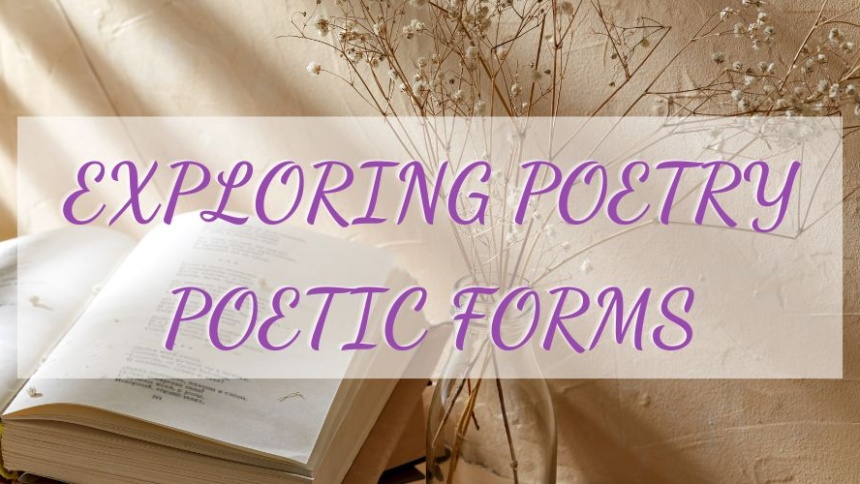Kicking off this month’s poetry blog, as it is National Poetry Month, is a post on poetic forms. I’m having a guest come and post on my blog each month talking about poetry from the various poetic forms to what poetry means to them. To start, I have Mona Mehas posting today about forms with examples from her poetry. Like me, Mona is also a member of the Poetry Society of Indiana.

Her work has been published in over 60 journals, anthologies, and online museums. Two of her poems won first place in the 2023 Poetry Society of Indiana Contest. She received a Pushcart Prize nomination for her poem ‘In 1920’ from the journal, Paddler Press, vol. 8, in November 2023. Mona is always working on a novel or poetry. She is a Trekkie and enjoys watching every Star Trek show and movie in chronological order.
Visit Mona’s website https://www.monamehas.net/ and her link tree.
Mona Mehas on Poetic Forms
Thank you for inviting me to be a guest on your blog. I love to experiment with different poetry forms. I use the analogy of writing in a cage with the latch open. That’s what it feels like to me when I write poetry using a form. I have rules to follow but with the latch open, I can escape the rules, I have leeway, room to breathe. Though I follow the restrictions, knowing I can breathe makes me look at the “rules” as guidelines instead of traps.

Viator Poetry Form
Invented by Robin Skelton, founder of the Malahat Review. I discovered the viator in Writer’s Digest. They always have a page for poetry called “Poetic Asides.”
- A viator has a repeating line that travels down in each stanza. In stanza one, it’s the first line. Stanza 2, it’s the second line, stanza 3, the third line, etc. There is no limit to the number of stanzas as long as the rule is followed and the last stanza has the repeating line as the last line. My longest viator is 8 stanzas.
- Each line has the same number of syllables.
- A viator can be rhyming or non-rhyming. Any form of rhyming is fine.
- The repeating line must make sense in each stanza. I write a viator when a line comes to me, I hear it in my head and I know it will make sense throughout.
Example of one of my published viators:
Blended Pleasure
Compose me, blend me into your lines
I’ll free you when you are discontent
Let your verbs caress my adjectives
Together, our beauty, Heaven-sent.
I beg entry to your poetry
Compose me, blend me into your lines
Passions entangle, our love, unbound
Our tones embrace, our meter, divine.
If cups empty and sorrow takes hold
If pages are gray with words smudged out
Compose me, blend me into your lines
My tears punctuate, ending the drought.Mona Mehas
Our joy, unending, fervor and flame
Stanzas, we write in tandem to shine
Like crystals seeing a baby day
Compose me, blend me into your lines.
Published February 2023 in Poetry As My Lover, page 5.
Poetry Society of Indiana
Villanelle Definition and Example
A Villanelle is a type of poem with
- 19 lines and a specific rhyming scheme: aba aba aba aba aba abaa.
- The first and third lines in the first stanza are repeated in alternating order throughout the poem
- AND appear together in the last couplet (last 2 lines.)
The most difficult thing about writing a villanelle is making sure to follow the rules.
The following is an example of one of my published villanelles:
Animals Within Me
I have animals within me
wolves with piercing eyes of gold
chasing freedom’s guarantee
Majestic elephant’s jubilee
their leathered skin in dreams foretold
I have animals within me
My dreams follow to the sea
beneath the waves, uncontrolled
chasing freedom’s guarantee
Giant whales act as trustee
their songs and stories to unfold
I have animals within me
Birds fly overhead with glee
voices raised as if to scold
chasing freedom’s guaranteeMona Mehas
I welcome the menagerie
the joy they bring of heights untold
I have animals within me
chasing freedom’s guarantee
Published in Honeyguide Magazine, October 29, 2023
The Acrostic Form
The third form to discuss here is the Acrostic.
In an acrostic poem, the first letter of each line spells a word or phrase. Usually that word or phrase is the title of the poem, but not always.
This is a fun and simple way to write a poem if you choose the words you use wisely.
I will share the poem for which I won a first-place award in the fall of 2023.
When Dogs Howl at Two AM
Mona Mehas
When clouds hang low with humidity high
Holding each sound inside our dreams
Echoes reverberate behind closed eyes
Nudging us out of our slumber
Dogs in the distance sing their songs
Odes to living off the leash
Gritty tunes about long hunts
Symphonies for the four-legged
Howling is their call to nature
Open to all responses
Welcoming the pre-dawn moon
Lullabies discarded
Anthems of the coming day
Tunes not heard in years
Time returns to our bed chamber
Weaving us back into deep sleep
Ocean-like waves in our minds
Air of sharp dampness
Memories of sweet musk
Poetry Society of Indiana 1st place in category, fall, 2023
Published in Ink to Paper January 2024
I could have chosen a different phrase to represent this poem; for example, “Wild dogs at night” might have worked, or the last line, “memories of sweet musk.” What’s more important is the words you write in the lines.
In Conclusion
I hope readers have enjoyed learning about these three types of poetry forms. In every instance, don’t hesitate to use a thesaurus liberally. If the right word doesn’t present itself there, look up another one that does. Don’t settle until you find the one that works for you.
No matter where you are, or what you’re doing, if a line comes to you, write it down. On paper, in your phone, on a paper bag… That line will serve you later.
Happy writing!
Thanks for sharing these forms with us, Mona! Readers, visit Mona’s website https://www.monamehas.net/ and her link tree. Tell us in the comments what your favorite poetry forms are!

